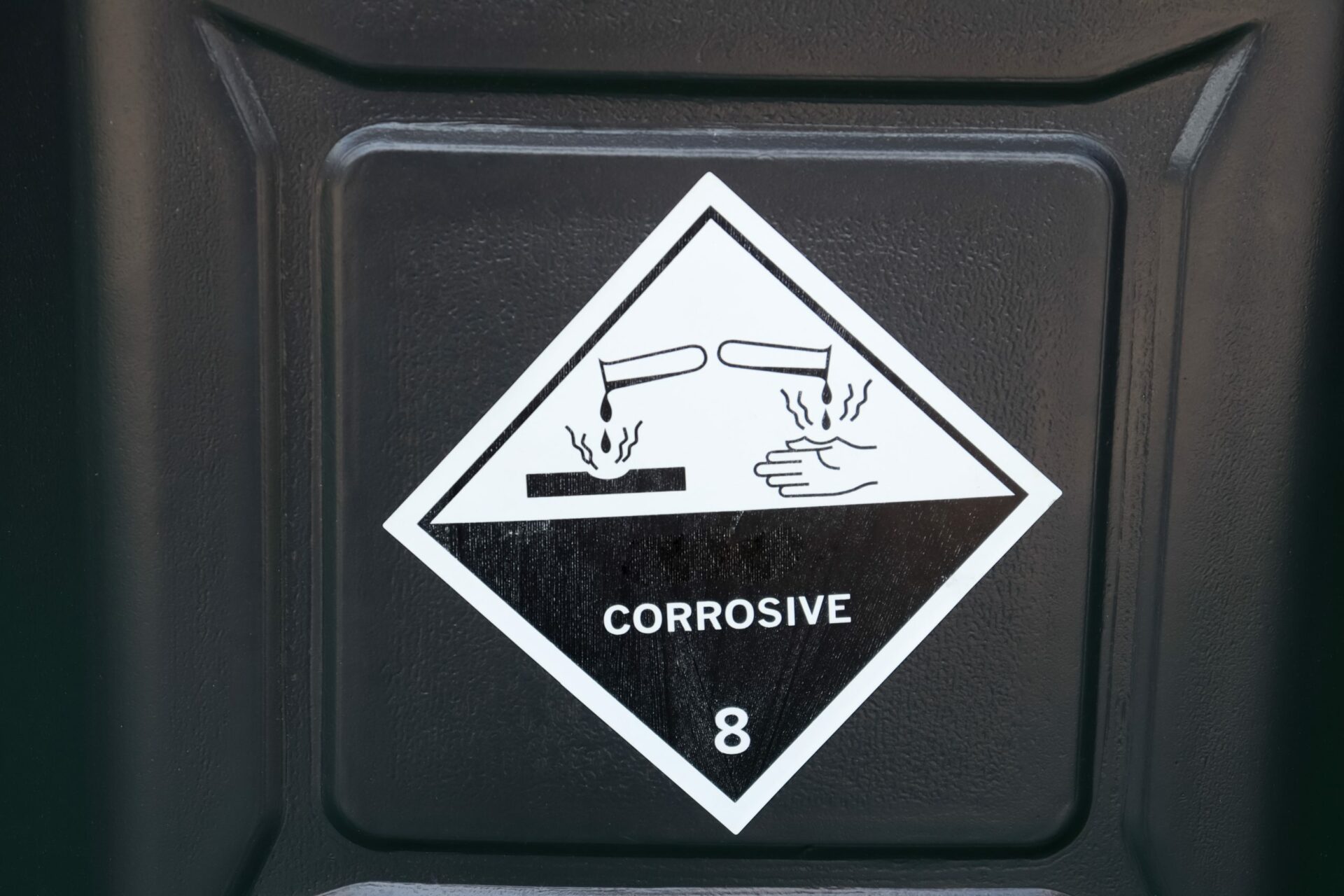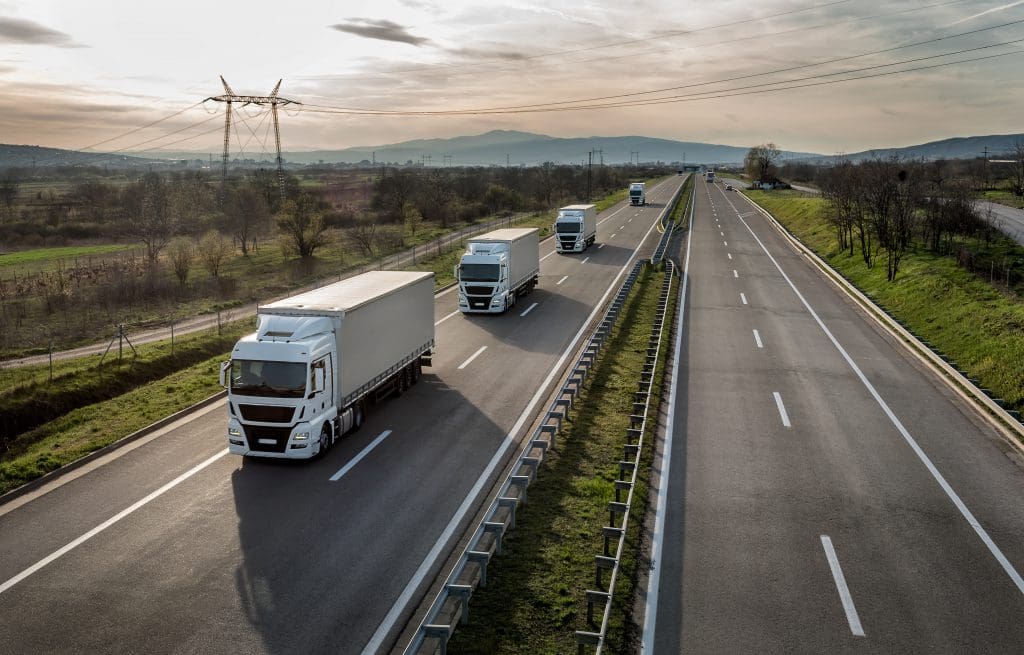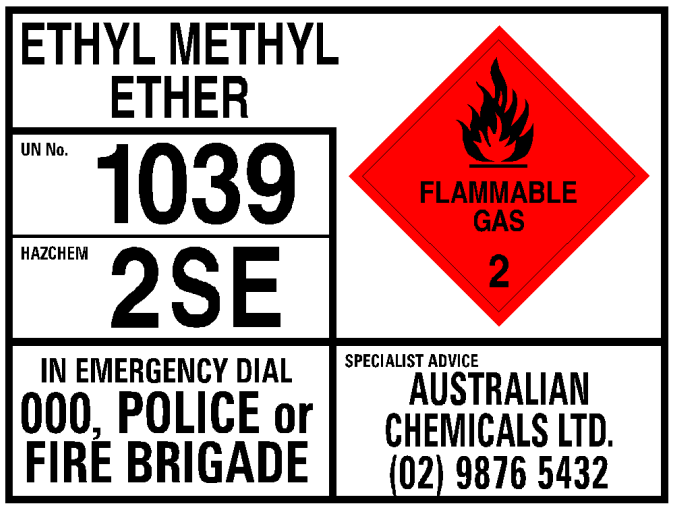
The packaging and transport of hazardous chemicals (hazchem) and dangerous goods comes with innate risk, so it's vitally important that these substances are stored and labelled in line with workplace health and safety regulations. Placards are critical to ensure the safe storage of dangerous goods both in facilities and in transit. Read on to better understand why placards are necessary, and how to properly interpret them.
Placards are used as visual indicators of high-risk chemicals and dangerous goods in a certain area. This includes manufacturing and storage facilities, and goods transport vehicles. A placard must be placed so that they are visible from both sides of a vehicle or container.
A placard is defined in the Australian Dangerous Goods Code as any class label or Emergency Information Panel (EIP) affixed to a cargo transport unit or placardable unit.
A placard load is defined as any Dangerous Goods transported unit which must be placarded with either a class label or EIP. See table 5.3 below for minimum quantities requiring an EIP.
A cargo transport unit includes any of the following: a road or rail transport vehicle, a portable tank, a bulk or freight container, or a MEGC. In this regard, the vehicle and the placard load receptacle are distinct entities.

Placard load requirements can vary between regions and the mode of transport. Dangerous goods transported by sea or by air are beholden to international maritime and aviation regulation, rather than local laws.
All Dangerous Goods packages and articles transported by road and rail in Australia are required to show a label which includes the DG classification and the UN number of the substance, as shown below:

Emergency information panels (EIPs) are a type of placard used on bulk portable or transported dangerous goods inside Australia. Transported dangerous goods loads larger than 500 L or kg must be placarded with EIPs to identify any hazards presented by the substance or chemical, as well as provide emergency services contact details. Version 7.7 of the Australian Code for the Transport of Dangerous Goods by Road & Rail outlines minimum quantities of goods which require placarding with Emergency Information Panels, in addition to class labels. See the table below.
Table 5.3: Placard Load (Minimum Quantities) (A placard load is defined in 1.2.1.1) | Note: the load must be assessed against both Table 5.3.1 and Table 5.3.2 |
|---|---|
| Table 5.3.1 Dangerous goods not transported under Chapter 3.4 | |
| Dangerous Goods in Cargo Transport Unit | Placard Load Quantity |
| (a) Any dangerous goods in a receptacle (other than an article) with a: • capacity > 500 L; or • net mass > 500 kg | One or more such receptacles (i.e. one or more placardable units) |
| (b) Any quantity of: • Division 2.1 (except Aerosols); or • Division 2.3; or • Packing group I of any Class or Division | Aggregate quantity of all dangerous goods (other than LQ) in the cargo transport unit ≥ 250 kg(L) (see Note 5) |
| (c) Division 6.2 Category A | All quantities |
| (d) Division 6.2 (other than Category A) | ≥ 10 kg(L) |
| (e) Loads where (a) – (d) do not apply | Aggregate quantity of dangerous goods (other than LQ) ≥ 1,000 kg(L) (see Note 5) - unless the load is a Fumigated Unit (UN 3359 –see Note 3), |
| Table 5.3.2 Dangerous goods transported under Chapter 3.4 | Note: these placarding thresholds are separate to and in addition to the above placarding thresholds. In practice, this may mean a single vehicle is required to be placarded with both a placard for the fully regulated DG in the load and an LQ placard. |
| Dangerous goods packed in limited quantities and/or domestic consumable dangerous goods. | Placard Load Quantity |
| (f) Limited quantities dangerous goods and / or domestic consumable dangerous goods (defined in 1.2.1) | The load includes limited quantities dangerous goods and/or domestic consumable dangerous goods that includes an aggregate quantity of any one UN number from a single place of consignment of ≥ 2,000kg(L) |
| (g) Loads where (f) does not apply Limited quantities dangerous goods and / or domestic consumable dangerous goods (defined in 1.2.1) | The gross mass of the limited quantities dangerous goods and/or domestic consumable dangerous goods is > 8 tonnes (see Note 5) |
Table 5.3 - Notes |
|---|
| NOTE 1: For placarding quantities of Class 1, see the Australian Explosives Code. NOTE 2: For placarding quantities of Class 7, see the Codes of Practice for the Safe Transport of Radioactive Substances. NOTE 3: A Fumigated Unit (UN 3359) complying with Chapter 5.5 that does not contain any other dangerous goods is not a placard load and should not be included in the aggregate quantity of dangerous goods when determining a placard load. NOTE 4: For land transport wholly within Australia, this Code requires placards to be displayed on cargo transport units if they contain a placard load, as determined from Table 5.3. It should be noted that cargo transport units containing lesser quantities may need to be placarded in accordance with the IMDG Code before they are acceptable for transport by sea, even within Australian waters. NOTE 5: When transporting a load that contains dangerous goods specified in (b) or (e) of Table 5.3.1 and dangerous goods specified in (g) of Table 5.3.2, each of which are below a placard load, the combined quantity of dangerous goods in the load must be calculated and the result assessed against the relevant threshold in Table 5.3.1. Calculation of combined quantity (i) If the relevant threshold for the dangerous goods in Table 5.3.1 is (b) - the combined quantity = the aggregate qty regulated DG + 10% of the Gross weight of the LQ/DC; or (ii) If the relevant threshold for the dangerous goods in Table 5.3.1 is (e) - the combined quantity = the aggregate qty regulated DG + 25% of the Gross weight of the LQ/DC |
Placards and DG class labels must also adhere to visibility requirements. A DG code class label must be oriented in a diamond, the sides of which must measure at least 250mm. If there are multiple relevant class labels, these all need to be visible and must measure no less than 100mm.
Placards and EIPs also are vital for ensuring that any emergency situations are dealt with safely and effectively. In case of a fire or chemical accident, emergency services must know what class of dangerous goods is involved so that they can respond appropriately and without exacerbating the situation. Hazchem numbers on EIPs are particularly useful for emergency response actions.
One of the key benefits to placards is that they are very easily recognisable. Interpreting them correctly only requires an understanding of labels and key words or codes. While most of the information represented on placards is consistent around the world, there are slight differences when it comes to additional information such as colour coding, emergency contact details, or hazchem numbers (which are only used in Australia, Malaysia, New Zealand, India, and the United Kingdom).
An emergency information panel in Australia will contain the following features: a 4-digit UN substance number, a substance name, a 2 to 3-digit hazchem code, and a dangerous goods code class label according to the designations below:
Classes 1, 2, 4, 5, and 6 have subclasses which further specify the hazard presented.

There are additional placards for other categories of dangerous goods, such as mixed class dangerous goods, substances kept at a high temperature (greater than 100oC for liquids or 240oC for solids), or for environmentally hazardous substances.
If you want to know more about chemical safety, storage, or regulations, we are here to help. At Chemwatch we have a range of experts spanning all chemical management fields, from heat mapping to Risk Assessment to chemical storage, eLearning and more. Contact us today to find out more at sa***@*******ch.net.
Sources: